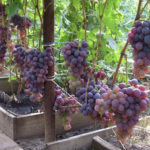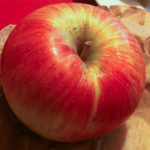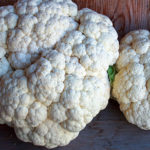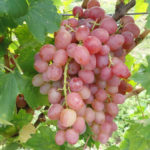Potato variety Laura
Laura is a medium early potato variety (Solanum tuberosum) for table use. Bred by the German specialists of the company "Europlant Pflanzenzucht GmbH" in order to replace the variety Red Scarlet... It is not included in the state register of breeding achievements of the Russian Federation, but it has become quite widespread in the Central and Northwestern regions of Russia. It is most popular in Europe and the Baltic countries. It is appreciated for the excellent presentation of tubers, good taste and high yield.
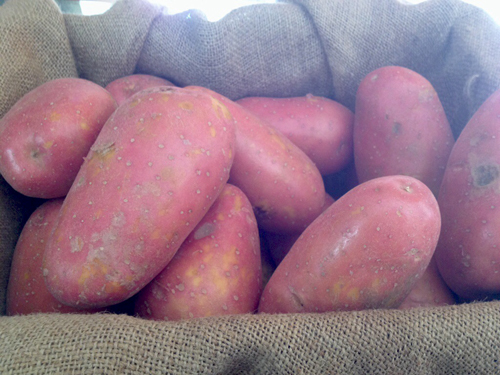
The plant is tall, intermediate type, spreading. The main stem is erect. Leaves of medium size, intermediate type, dark green in color, without pubescence. The veins are clearly delineated, the structure of the lamina is wrinkled. The flowers are white, usually there are quite a few of them.
The root system of potatoes is well developed, up to 20 very large tubers weighing 90-150 grams can form in one nest. They have a regular oblong-oval shape and a flat surface without bumps and depressions. The peel is firm, dark pink in color, smooth to the touch. Laura's pulp has a dense structure and rich yellow color, does not darken during heat treatment and cutting. The eyes are small, superficial.
The variety is high-yielding, from one hectare it is possible to collect about 500 centners of marketable products. On average, the yield index varies within 330-450 c / ha, this difference is associated with climatic zones of growth, differences in soil and agrotechnical cultivation methods. Under favorable conditions, it is possible to stably obtain about 2 kg of tubers from one plant.
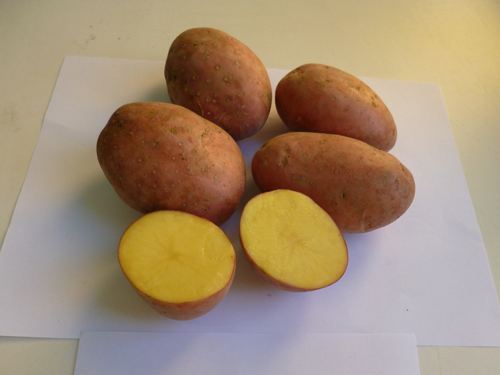
The taste is very good. The variety belongs to culinary type B (according to the EAPR classification - European Association for Potato Research), suitable for the preparation of absolutely any dish. The tubers are medium-sized, ready-made, retain their shape and have a pleasant rich yellow color. The pulp is of normal consistency, not watery, contains about 15-17% starch. Laura is especially good for preparing salads and vegetable mixtures, dressing soups, deep-fried and processed into chips. It is also great for cooking, baking, stuffing, it will be an excellent side dish or an independent dish.
Our hero is quite picky about soils, it is better to grow him on light fertile soils. Because of this feature, it gained its distribution in Russia, mainly in the Central region. On chernozem soils, the plants show very good yields, often exceeding the performance of the very Red Scarlet, which this variety was replaced by. In care, the variety is also quite whimsical, however, a skilled gardener can easily cope with all the nuances of growing. Below is a short list of the main features of agricultural technology.
- The originator recommends to warm up the seed material 3 days before planting. This will promote better germination.
- Tubers should be planted after the soil warms up to + 10-12 ° C.
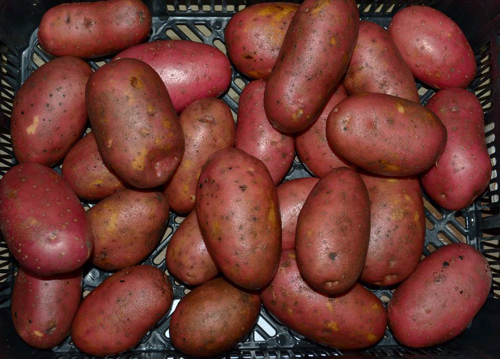
- According to the originator, it is advisable to plant 42 thousand tubers per hectare of area, that is, 420 per hundred square meters.
- Plants are very responsive to watering, one might even say that they are more comfortable in well-moisturized soil. The ideal solution is to install an automatic irrigation system.
- Potatoes also respond well to standard farming practices. Weeding, loosening the soil, hilling, preventive treatments for diseases and pests - all this will have a beneficial effect on the yield and health of your plantings.
- Laura is very sensitive to the herbicide Metribuzin.If you are using chemical weed control methods, be careful with this pesticide!
- Remember to follow the crop rotation. The best predecessors are green manure, cabbage, legumes, onion, cucumber, zucchini, garlic, beets.
- Replace seed material in a timely manner so that the tubers do not degenerate.
As for dressing, the originator of the variety offers a small list of recommendations:
- nitrogen fertilizers can be applied in medium quantities, as needed;
- phosphorus complexes are used at the rate of 100 kg / ha;
- potash dressing is carried out in the amount of 200-250 kg / ha, it is better to use potassium sulfates;
- magnesium complexes are applied in an amount of 60 kg / ha.
Our hero is moderately resistant to most diseases, especially immune to the Y virus and leaf curling. Tops and tubers are rarely damaged by late blight.
Laura appeared on the wide market relatively recently and has not yet managed to gain the due popularity among Russian gardeners. However, it is very actively cultivated in Europe and the Baltic countries, while showing very good results. Those gardeners who grow this potato on the territory of the Russian Federation speak quite well of it. It is especially appreciated for its excellent taste, stable high yield, and excellent presentation. It should also be noted that good keeping quality (90%), tubers do not germinate for a long time, retaining their consumer and commercial qualities, and also have an average resistance to mechanical damage.
But the disadvantages are also worth mentioning. The main one is the exactingness of plants to soil and climatic conditions. Basically, Laura is grown only on black soil in areas with a mild climate. For cultivation in more northern latitudes, it is better to choose another variety, zoned in a specific region. There is also a strong dependence of the yield on the weather conditions of the season.
